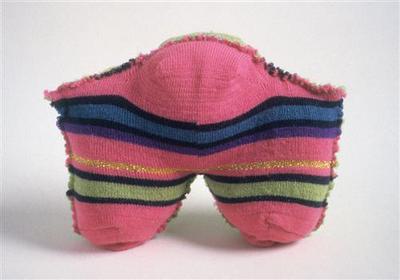Project B: sebilj
By
Francoise Dupre
2007 - 2008
Françoise Dupré and Edward Minott
Dimensions
variable
A collaboration with artist Dr Myfanwy Johns
Project B (2007-2008) was a Birmingham-based trans-national collaborative public art community project referencing the functionality of ornament and its transformative quality on architectural space. It brought together two individual artists: Françoise Dupré and Myfanwy Johns who worked collaboratively and in partnership with architect Sabina Fazlic and participants from the charity organisation the Bosnian Cultural Centre-Midlands (BCCM). sebilj (2007-09) followed the successful introductory project avlija and its exhibition at the 2007 New Generation Arts (NGA) Festival and Architecture Week in Birmingham.
Through digital technology Project B transformed and combined traditional craft techniques and Bosnian design, proposing for Birmingham a contemporary interpretation of Sarajevo's famous Sebilj.
Project B: sebilj activities took place in three stages
- First stage, 11 November 2007 – 18 May 2008: a series of workshops led by Françoise Dupré with Myfanwy Johns and a research trip to Sarajevo and Mostar, Bosnia and Herzegovina.
- Second Stage, 10-20 June 2008: an exhibition at the Custard Factory, Birmingham part of Digital Utopia? New Generation Arts Festival, Birmingham, 2008.
- Third stage, 20-24 June 2008: Evaluation and celebration
Artworks included:
- Four mixed media digital prints. 2mH x 1m W
- Four mixed media textile samples (diverse sizes)
- Two half-section architectural models 1m20 x1m40, laser cut and etched design on acrylic and maple ply veneer panels, fabricated by model makers ‘Dragonfly’.
Project B: sebilj contributed to the 2008 NGA Festival Digital Utopia? and was an exhibition of research, development ideas and designs and a proposition for a future sebilj, in the form of a large portable flat-pack type public structure. Influenced by traditional Bosnian design and inspired by the famous public fountain and landmark Sebilj in Sarajevo, the artwork's final location, might be in the future, the newly acquired BCCM' s community centre in Birmingham.
Between November 2007 and June 2008, artists and participants worked together on a series of creative activities. Dupré and Johns carried out a research visit to Bosnia-Herzegovina in April 2008. The trip, gave the artists valuable first hand opportunities to experience and study traditional and contemporary Bosnian architecture and design and to make contact with Bosnian artists, architects and cultural institutions. The participants discovered more of Birmingham's history by visiting the historic Jewellery Quarter and Museum. This visit offered inspiration about the traditional and contemporary skills of making jewellery and small metal objects.
Dupré and Johns led monthly practical workshops where participants were encouraged to make samples and create patterns inspired by traditional iron work, carved wooden panels, embroidery and participants' own needle work. Workshops included the use of materials such as plastic sheet, tubing and wire and discussions were held around the re-interpretation of the samples into fabricated panels for the future sebilj structure. Guest artists, Adam Williamson and Lateefa Spiker, led a workshop on the practice and meaning of traditional geometry in sacred and traditional arts. Participants explored how this form of pattern making, with its inherent order, expresses the Islamic vision of the universe. A workshop by architectural model makers Dragonfly enabled participants to develop 2-dimensional pattern into 3-dimensional form. Dragonfly's subsequent visits helped to visualise how participants' samples, once captured in digital format, could be transformed into industrial processes such as laser cutting and etching. A series of digital workshops, assisted by photographer Krystof Kryz, further developed participants' digital skills. The computer was been used as a tool for generating, translating and manipulating scanned samples into large scale or very small repeat pattern. One session led to the transformation of a papercut drawing of a traditional Bosnian coffee pot into an intricate pierced laser pattern. After each session, patterns were analysed for tessellations and counterpoint where for instance the negative shape left behind from a cutout pattern was turned into a repeat border frieze. The overall outcomes: design samples, small models and an architectural maquette were exhibited at the 2008 NGA Festival Digital Utopia?
The sebilj exhibition revealed the often hidden complexity involved in the research and development of a public and community-based art project that engages with the interplay between traditional crafts, handmade objects and digital technology. The creation of ornamentation has often used and been influenced by new techniques. For example, Birmingham once being at the heart of the industrial revolution witnessed the creative use of metal and terracotta in the built environment. With sebilj, Project B follows this tradition, echoing the influence of Victorian designer and architect Owen Jones whose seminal book 'Plans and Elevations of the Alhambra' strongly influenced British architectural and interior design. The re-interpretation of historic and vernacular patterns and the use of digital technologies emphasised the connectivity between new, old, global and the culturally specific and celebrated the trans-cultural nature of Project B.
For a full discussion on Relational Aesthetics, Project B: sebilj and my collaborative-participatory approach, read my commissioned essay Making Stuff for AXIS Dialogues 2008, relocated here as a pdf
Sebilj would not have been possible without the commitment and enthusiasm of: Azra Bašic, Suada Bogdanic, Ulfeta Catibusic, Nasiha Dedic, Senida Duric, Ramiza Duric, Sabina Fazlic, Hazim Fazlic, Emina Halilovic, Alen Kahriman, Abid Kahriman, Fedžra Kahriman, Amer Kahriman, Amela Karic, Samira Karic, Šemsa Mekic, Amra Mekic, Himzo Mekic, Arnela Mekic, Haris Šarcevic, Amar Viteškic, Maida Viteškic, Zaim Viteškic, Muharem Vunic, Mirsad Vunic, Šacira Vunic.
Project B: sebilj was funded by Arts Council, England, BIrmingham City University and Oxford Brooks University
Sebilj is from an Arabic word for road. In Bosnia it is a kiosk shaped public fountain, usually donated by an individual. Sarajevo's sebilj is a famous and symbolic landmark.
Françoise Dupré and Simon Meddings Associates
F.Dupré, M. Johns, Amra Mekic, Amar Viteskic, Clare Whelan
Helping Artists Keep Going
Axis is an artist-led charity supporting contemporary visual artists with resources, connection, and visibility.






